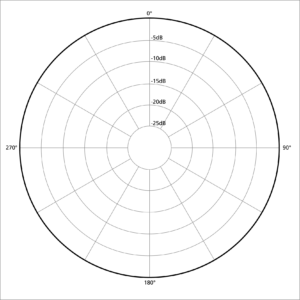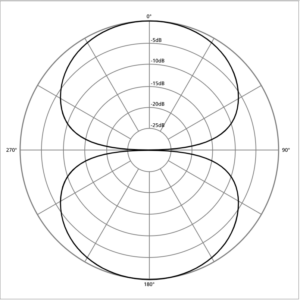How to Select the Perfect Microphone

A microphone is one of the most common pieces of AV equipment. You need a microphone to participate in conference calls, give a presentation, use a PA system, or record a podcast…
This article will help you understand how microphones work and which one will best suit your business needs.
How Microphones Work
Sound is a mechanical wave that puts pressure on an obstacle it hits. This interaction is what helps humans perceive sound, and the same principle applies to microphones. A microphone is a transducer that converts sound waves into electric signals and sends them to an amplifier.
Different types of microphones use various mechanical or electrical parts to pick up sound waves. For instance, a dynamic microphone has a diaphragm and a metallic coil wrapped around a magnet. Whenever a sound wave hits the diaphragm, the coil moves, creating electric energy.
Sound like rocket science?
Here is a 1-minute-long video explanation created by the “Into the Ordinary” YouTube channel:
What In the World Is a Polar Pattern?
Another important concept that we want to explain in this part is polar patterns. This term describes how a microphone treats sound coming from different directions.
Here are a few examples:
Cardioid is the most common type of polar pattern. A cardioid microphone will pick up sounds directly at the front of the mic and reject sounds coming from all other directions.

Omnidirectional (or simply “omni”) polar pattern microphones pick up sound waves no matter where their source is located. These are used when you need to record ambiance or a group of people.

Figure-8 polar pattern microphones pick sounds both from the front and the back of a mic. It is convenient when you record an in-person interview since you can get clear sound for both yourself and the person you are talking to with a single mic.

Types of Microphones
Now that you understand the main principles, it’s time to talk about different microphone types. We will focus on two main ones used in modern business environments:
- Dynamic microphones
- Condenser microphones
Dynamic Microphones
These are the most common type of microphones. They are known for their ruggedness and reliability, and very decent professional-grade models can cost as low as $100.
Dynamic microphones are known for their relatively low sensitivity. That means that you will want to keep these mics as close to the source of sound as possible to get the best audio quality. At the same time, dynamic microphones reject background noise much better than condenser microphones.
Condenser microphones
Condenser mics are known for their high sensitivity and ability to pick up more natural, detailed sounds. These can be beneficial when you want to record a quiet voice, musical instruments, or ambient sounds – or just don’t want to hold a microphone too close to your face.
On the other hand, if you use a condenser microphone for calls or podcast recording in a space without acoustic treatment, the microphone can pick up a lot of background noise and reflected sounds.
Condenser microphones are more fragile than dynamic ones and typically cost more because they are more sophisticated. Their most common use case is audio recording studios.
However, since most dynamic mics are cardioid, you may have to stick with a condenser mic if you need an omnidirectional or figure-8 microphone.
Wired Vs. Wireless Microphones
Wireless microphones are widely used for live performances, presentations, corporate events, and similar activities. They typically use RF technology to relay the audio signal to a receiver.
While more expensive than wired systems, they offer much more flexibility. Remember that wireless mics need batteries, so charge them for your next event!
If you opt for a wired mic, you still have a choice: some models use XLR audio cables, while others connect via USB (and some mics have both options!).
Which Microphone to Choose for Your Needs
Now to the main question: which microphone is ideal for your needs? Let’s discuss a few use cases.
Conference Room
Speakerphones are a popular solution for conference rooms. Such devices have multiple built-in microphones facing different directions to pick up each participant’s voice. They are typically placed in the middle of a table.
However, if there is an obstacle (for instance, an open laptop cover) between a speaker and the speakerphone, the audio quality degrades significantly.
A ceiling microphone array is an elegant way to mitigate such problems. As the name implies, the microphones are directed at the speakers from above.
Classroom
A wireless lavalier (lapel) mic is your best choice for classrooms. It is small and lightweight, allows the teacher to move freely around the class, and provides decent sound quality.
PA System
A simple gooseneck microphone is the best option to convey your message through a PA system. Such mics are relatively cheap, simple, and will do their job just great.
Live Performance Venue
Depending on the scale and nature of an event, you will need quite a few microphones (and at least one sound engineer) to pick up all the sounds on the stage.
Most of these microphones will be dynamic since more sensitive condenser mics may pick up unwanted background sounds. That said, condenser microphones are more often used for acoustic instruments like pianos and guitars.
Content Creation Studio
Many professional content creators use a variety of microphones for different tasks. Each microphone has its unique tone, which can suit a specific situation.
For voiceover projects, when you need to record a natural-sounding voice that conveys emotion, a good condenser mic will be the best choice. For recording a podcast, a dynamic microphone that produces smooth, broadcast-like audio will be more suitable.
Still not sure which microphone to choose? Our experts are here to help! Call us, and let’s talk!

